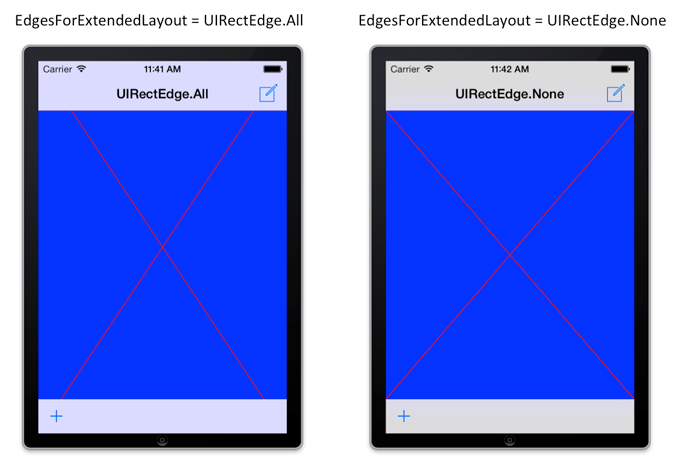UIViewController.EdgesForExtendedLayout Property
Definition
Important
Some information relates to prerelease product that may be substantially modified before it’s released. Microsoft makes no warranties, express or implied, with respect to the information provided here.
Specifies how the ParentViewController should extend the layout of this UIViewController.
[ObjCRuntime.Introduced(ObjCRuntime.PlatformName.iOS, 7, 0, ObjCRuntime.PlatformArchitecture.All, null)]
public virtual UIKit.UIRectEdge EdgesForExtendedLayout { [ObjCRuntime.Introduced(ObjCRuntime.PlatformName.iOS, 7, 0, ObjCRuntime.PlatformArchitecture.All, null)] [Foundation.Export("edgesForExtendedLayout", ObjCRuntime.ArgumentSemantic.UnsafeUnretained)] get; [ObjCRuntime.Introduced(ObjCRuntime.PlatformName.iOS, 7, 0, ObjCRuntime.PlatformArchitecture.All, null)] [Foundation.Export("setEdgesForExtendedLayout:", ObjCRuntime.ArgumentSemantic.UnsafeUnretained)] set; }member this.EdgesForExtendedLayout : UIKit.UIRectEdge with get, setProperty Value
The default value is All.
- Attributes
Remarks
Prior to iOS 7, the View did not visually underlap parent elements such as the status bar, navigation bar, or toolbar. In iOS 7, it typically should.
The EdgesForExtendedLayout specifies to the ParentViewController how the edges of this UIViewController should be extended for underlap. The default value of All specifies that all edges should be extended to underlap, while None specifies an extent similar to that in iOS 6 or earlier.
The following image illustrates the difference: when EdgesForExtendedLayout is set to All, the drawing rectangle of the underlying UIView underlaps, but if EdgesForExtendedLayout is set to None, the drawing rectangle is restricted to the interior.
